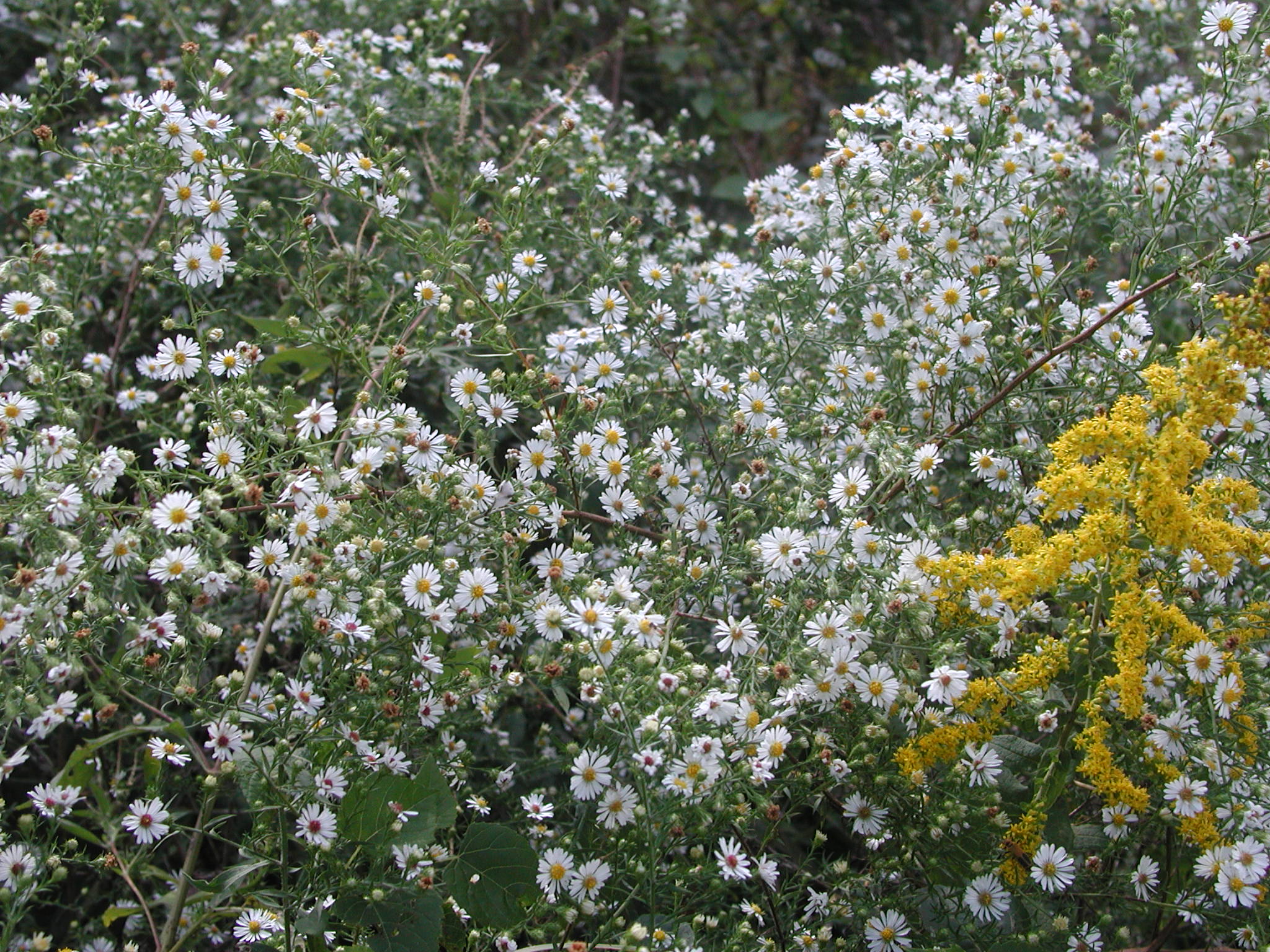Resource Library
Plant of the Week: Symphyotrichum (Aster) pilosum; Old Field Aster; Frost Aster
Drive down almost any back road in Arkansas in September or October and you will likely see a tall, white-flowered aster in bloom. Called Old Field, Frost or just White Aster (Symphyotrichum pilosum), it is the elevator music of the season. We see it everywhere but seldom pay it serious attention.
Old field aster is one of about 90 species of Symphyotrichum now recognized. It is a persistent herbaceous perennial that grows native from southern Canada through the eastern United States to Florida and Texas, including all of Arkansas. It is mostly found in disturbed places, in abandoned fields and along roadways.
Plants grow 3-4 feet tall with low-branching semi-woody stems that are themselves freely branched and terminate in numerous clusters of flowers in late summer and into the fall. The leaves and stems are usually densely pubescent. The slender stem leaves are 1-3 inches long while the basal leaves are spatulate.
The flowers are three-fourths of an inch across with 15 to 30 white ray florets surrounding a cluster of 30 or so yellow, aging to reddish-purple, disc flowers. When mature, the seeds ripen with tufts of white hair that disperse the seeds by wind.
Prior to 1994, most of the 350 species of plants we knew as “asters” from throughout the world were in the Aster genus used by Linnaeus. But that year Texas based taxonomist Guy L. Nesom separated out the 150 New World “asters,” subdividing them into half a dozen genera and resurrecting the long-dead genus Symphyotrichum for the 90 species most of us actually think of as real Asters. Nesom, a composit specialist, separated these plants using traditional taxonomic means, but by the turn of the century most of his findings had been confirmed by DNA means.
The arcane rules of taxonomy are centered on the idea of “first usage” of a name, so the Old World species retained the name Aster and we got stuck with one that had been little used since the 1830s. The tongue twister comes from Greek symph (coming together; same root as in symphony) plus trich (hairs); a reference to a supposed fused ring of hairs in the fluff that carries the seed away on the wind. But this characteristic is not really present in our asters, so we’re stuck with a name that’s not only hard to remember, but also meaningless.
A similar plant, S. ericoides (white heath aster), looks much like the old field aster but has flowers that are less than one half-inch wide and leaves and stems that are less pubescent. It ranges further west across the Great Plains and into the Rocky Mountains but is somewhat less common in Arkansas than old field aster. More than 20 species of “asters” are found in Arkansas, but these are the two most common white ones.
Old field aster and white heath aster are both available online in the wildflower/native plant trade. They are tough, adaptable plants well suited for sunny, dry sites where they are required to fend for themselves or they can be added to fall borders where their white flowers harmonize with whatever may be going on around them. Propagation is easy by seed, springtime division or cuttings taken early in the growing season.
For more information about horticulture or to see other Plant of the Week columns, visit Extension’s Website, www.uaex.uada.edu, or contact your county extension agent. The Cooperative Extension Service is part of the U of A Division of Agriculture.
